Outdoor Activities and Adventures, Sapporo
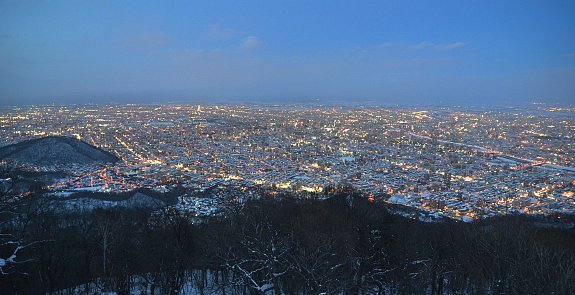
Removed from Unnamed collection
Mount Moiwa 
Mount Moiwa (藻岩山, Moiwa-yama) is one of several small, forested mountains southwest of central Sapporo. The mountain is a popular sightseeing spot that is known for the spectacular view out over the city from an observation deck at its summit. The view is especially beautiful after sunset. https://www.japan-guide.com/e/e5309.html
Map

Removed from Unnamed collection
Hokkaido University Botanic Gardens 
This botanical garden (北海道大学植物園, Hokkaidō Daigaku Shokubutsuen) close to Sapporo's city center belongs to Hokkaido University and primarily serves a scientific and educational purpose. The garden with its walking trails and lawns, however, is also a pleasant place to take a break or to have a (non-alcoholic) picnic.
Established in 1886, the Botanic Garden preserves a small part of the forest which formerly covered the Ishikari Plain. In addition, there is an alpine garden, a greenhouse and a small Ainu museum. During the winter, only the greenhouse is open to the public. https://www.japan-guide.com/e/e5304.html
Map
Explore more places related to this search:
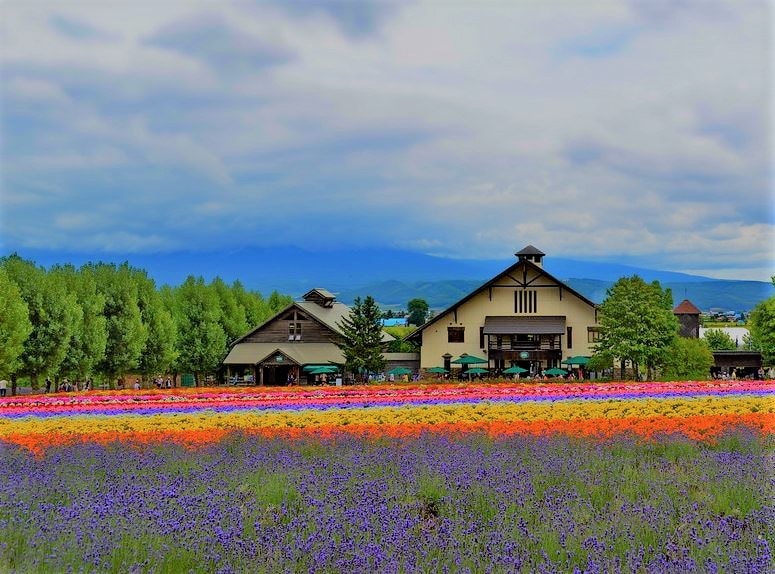
Removed from Unnamed collection
Tomita Farm 
As far as day trip ideas from Asahikawa go, Tomita Farm is a great choice. A 10ha lavender paradise, Tomita Farm provides ample opportunity for relaxed walks surrounded by seemingly endless patchwork of color, so beautifully arranged and expertly manicured, that the hills seem almost artificial.
Beautiful birch-lined pathways provide comfortable shaded access to the many lavender gift shops, workshops, and rest stops scattered throughout the gardens. The workshops allow visitors to see first-hand how the harvested lavender is treated, worked, and turned into the countless lavender infused products available as elegant gifts and items for everyday use.
Lovers of sweets will be impressed by the lavender flavored soft-serve ice cream, pudding, and jelly found at the cafe, along with plenty of other light lunch options. http://www.asahikawa-tourism.com/asahikawa/asahikawa_sites/tomita_farm/tomita_farm.html
Map
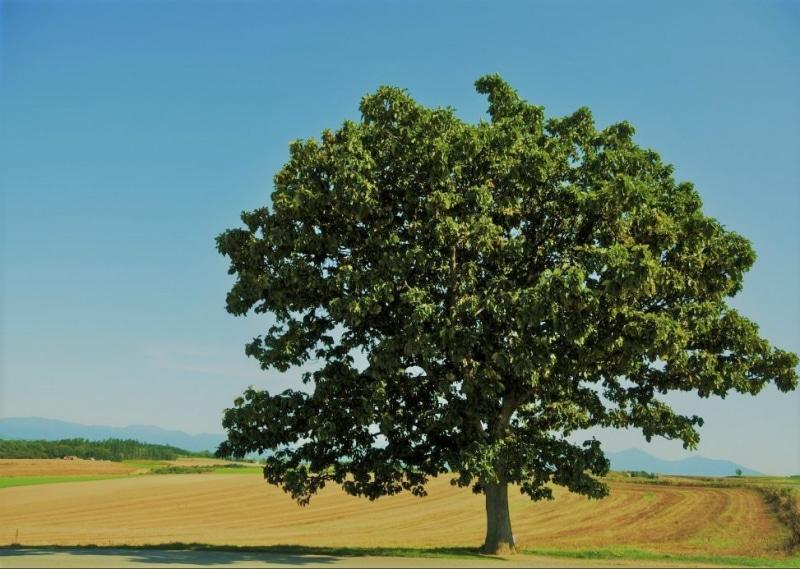
Removed from Unnamed collection
Seven Stars Tree 
Sevenstar Tree (セブンスターの木) is oak on Patchwork Hill (パッチワークの丘) in Biei town located in the southeastern part of Asahikawa city and was named after Sevenstar (famous Japanese cigarette). The tree was printed on a package of the cigarette in 1976 and has become a famous tourist attraction.
A solitary oak grows around the hilltop of the Biri at about 260 m above sea level. Its height is around 13 m. In the summer, the vital power can be felt when branches are thickly covered with leaves. But it looks only just the tree with a lot of branches closely, so it is worth seeing at a little distance. https://good-hokkaido.info/en/sevenstar-tree-biei/#Sevenstar_Tree
Map
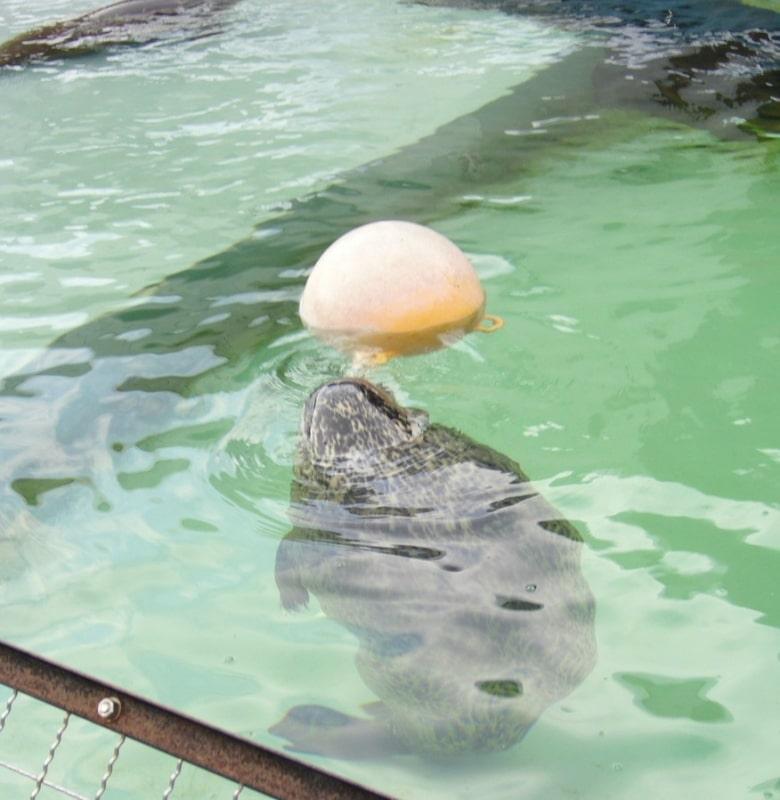
Removed from Unnamed collection
Asahikawa Zoo 
Recently Asahiyama Zoo has displaced Ramen and skiing as Asahikawa's primary drawcard, in the process, becoming Japan's number one zoo. The total number of people expected to have visited the zoo by the end of 2007 is in excess of 3 million, an impressive figure when you consider that the population of Asahikawa is a mere 360,000. And, all this form a zoo that just over a decade ago was struggling to stay open.
Asahiyama zoo features more than 800 animals from approximately 150 species, a healthy number when you consider the difficulties associated with maintaining animals during a hot summer and an extremely cold winter.
As can be expected, however, people do have their favourites, and the polar bears, penguins, seals, big cats, and orangutans come in for special attention. The enclosures for these animals are designed with both the animal and visitor in mind so you can expect to get closer than you might imagine. The penguin enclosure, for example, affords a 360-degree view. There is a vertical tank for the spotted seal which prefers to dive and surface vertically. The polar bear enclosure has a variety of built-in viewing areas to allow you special access. http://www.asahikawa-tourism.com/asahikawa/asahikawa_summer/zoo/asahiyama_zoo.html
Map
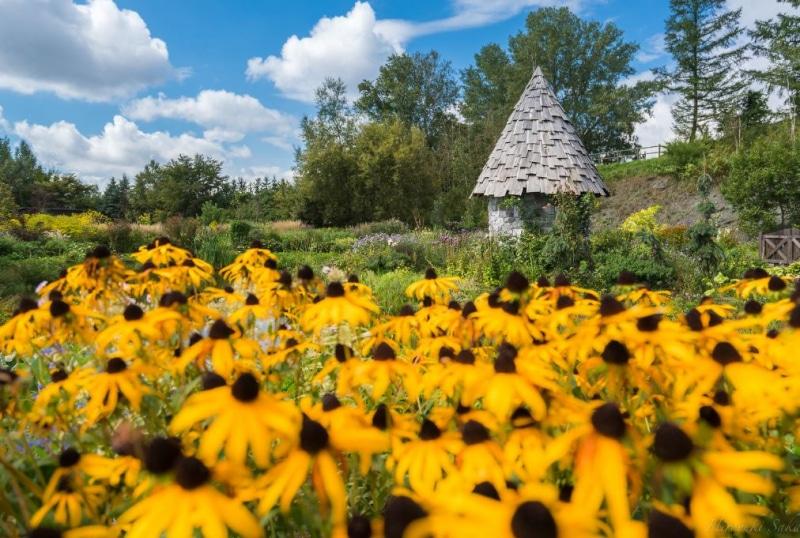
Removed from Unnamed collection
Ueno Farm 
Ueno Farm is a popular farm garden in Nagayama located in the northeastern part of Asahikawa city and has been a farmer since 1906. Ms Sayuki Ueno, a gardener, made a Hokkaido-style garden suited for the climate and natural features of Hokkaido as the foundation for an English-style garden at their site and the garden has been opened to the public since 2001. More than 2,000 types of flowering plants are planted at about 1.3 ha of the site, and visitors can enjoy various flowers from spring to autumn. An open period is from late April to mid-October. Admission fee is JPY 800. A parking lot is free of charge. NAYA cafe is built at the site and opens a business through the year. https://good-hokkaido.info/en/ueno-farm-asahikawa/#Ueno_Farm
Map

Removed from Unnamed collection
Daisetsuzan National Park 
Daisetsuzan (大雪山) is Hokkaido's largest national park. It preserves a mountainous area of virtually unspoiled wilderness, which is larger than some of Japan's smaller prefectures. It is a paradise for hikers, outdoor lovers, deer and brown bears, and the first place in Japan to see fall colors and snow each autumn. https://www.japan-guide.com/e/e6775.html
Map
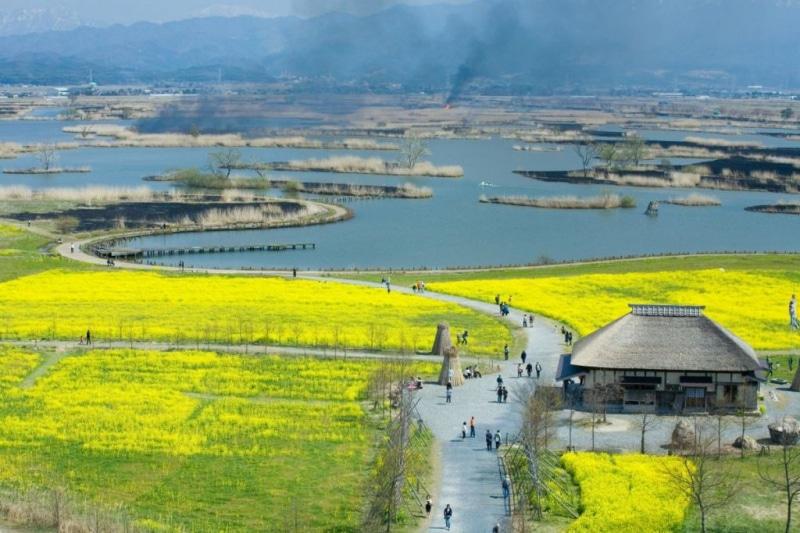
Removed from Unnamed collection
Fukushimagata Wetlands 
Fukushimagata Wetlands is a vast nature reserve stretching over 193 hectares. It is home to a number of endangered species of animals and plants and is listed on Japan’s 100 greatest natural environments. The park is a paradise for bird and plant lovers.
In spring, the carpet of rapeseed flowers is impressive. Indulge yourself in the vivid yellow colour and scent of the flowers while listening to birds singing. In summer, giant pink lotus flowers are in bloom. The rarely seen Euryale ferox, a massive lotus with two-metre leaves and thorns, can be found here. In winter, the snowy scene of the wetlands with migratory swans is a favourite.
Along with flocks of swans, the greatest concentration of Eastern Taiga Bean geese, a recognised national natural treasure, resides here. Fukushimagata Wetlands is also designated as a wildlife sanctuary for the Japanese white crucian carp. https://enjoyniigata.com/en/spot/7405#
Map
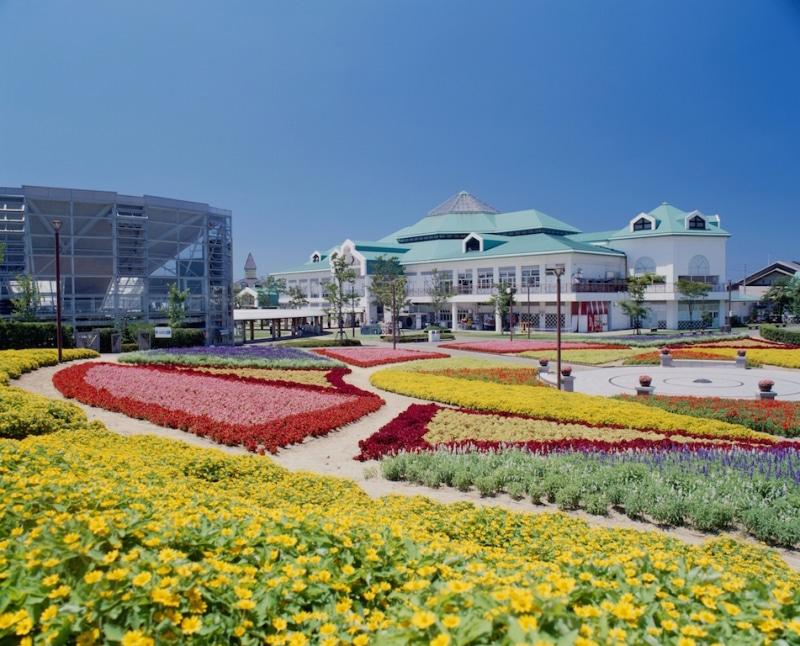
Removed from Unnamed collection
Niigata Furusato Village 
Niigata boasts sake, rice, and fish that can compete with the best in the nation as well as specialty products and traditional crafts. You can find all of these for sale at Niigata Furusato Village. What’s more, there are a whopping 10,000 products available! http://enjoyniigata.com/en/detail/page/detail/4481
Map

Removed from Unnamed collection
Hoshitoge Rice Terraces 
There are many rice terraces in Tokamachi. If you only have time to see one, we recommend the Hoshitoge Rice Terraces. If you visit early in the morning, you may be able to see the sea of clouds drifting into the valley. In summer the whole landscape turns shades of bright green, and in winter, the rice terrace is covered with snow. You can enjoy various beautiful landscapes depending on the season and time. https://enjoyniigata.com/en/spot/10051#
Map
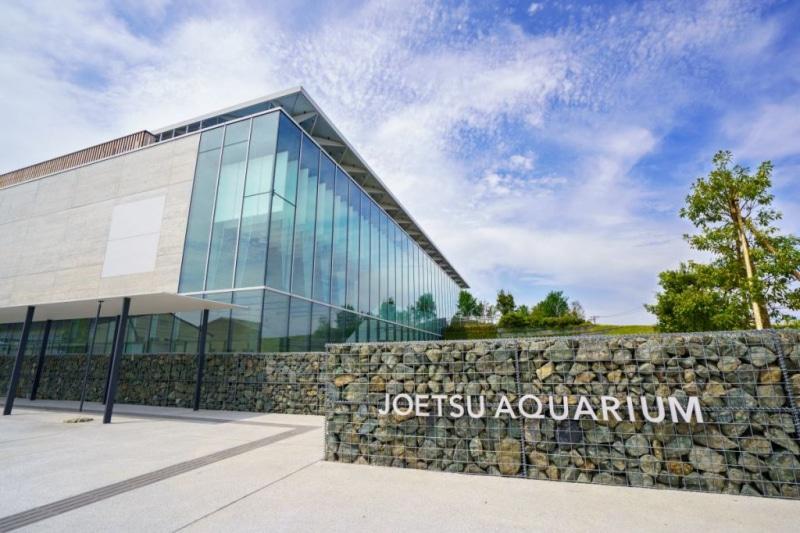
Removed from Unnamed collection
Joetsu Aquarium Umigatari 
Renovated in June 2018, its nickname is "Umigatari." The aquarium has more Magellanic penguins than any other in Japan, and you can see them up close! You can also watch the dolphins' exciting jumps against the backdrop of the great Sea of Japan. It's full of attractions to see. https://enjoyniigata.com/en/spot/8481#
Map

Removed from Unnamed collection
Tsunan Sunflower Field 
500 thousand sunflowers bloom broadly in this 4-hectare field. The children's sunflower maze inside the field is one popular attraction. Guests can get a panoramic view of the sunflower field from the observation platform, where they can surely take photos that they will like. Outdoor stalls line the plaza area, energizing the entire venue. https://enjoyniigata.com/en/spot/2494#
Map
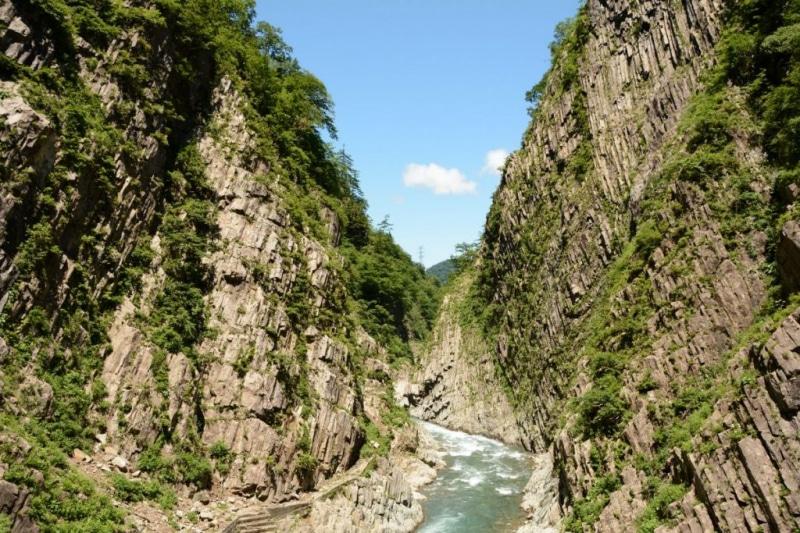
Removed from Unnamed collection
Kiyotsukyo Gorge 
One of the Three Great Gorges of Japan. Gigantic stone cliffs straddle a river, forming a large, V-shaped gorge. The grand rock surface and strong current of the river in combination are both dynamic and beautiful. The facilities were renovated in the spring of 2018. A two-story building with a cafe on the first floor and foot bath on the second floor is now in operation right next to the tunnel entrance. https://enjoyniigata.com/en/spot/6950#
Map

Removed from Unnamed collection
Naenataki Fall 
An impressive 55m waterfall framed by a steep basalt wall on each side, where thundering water crashes onto the large boulders below. The most popular season is spring when the snowmelt from the mountain flows down and causes the volume of water to increase dramatically, but we would also invite you to take a look in the fall season when the leaves have changed colours. There is a pedestrian deck overlooking waterfall, and it is about 15 minutes on foot from the nearest parking area. Come and feel the power at the basin of the waterfalls from the observation area. https://enjoyniigata.com/en/spot/8528
Map

Removed from Unnamed collection
Chiba Zoological Park 
The Chiba Zoological Park, first opened in April 1985, is located about halfway between Tokyo and Narita, just outside of the city of Chiba.
The zoo is divided into seven sections: the Zoological Hall, the Small Animal Zone, the Steppe Zone, the Monkey Zone, the Avian and Aquatic Zone, the Ancestors of Domestic Animals Zone, and the Children’s Zoo. The Small Animal Zone houses Futa, the red panda who in 2005 became a television celebrity because of his ability to stand on his hind legs. His son, Kuta, now has the same ability, so you have twice the chance to see the spectacle when you stop by! The park map has pictures of the animals (at their locations), so there is no need to worry if you cannot get ahold of an English map.
If you can, it is extra special to visit the zoo between mid-March and mid-April, when the many cherry blossom trees onsite are in full bloom! https://en.japantravel.com/places/chiba/chiba-zoological-park/16
Map
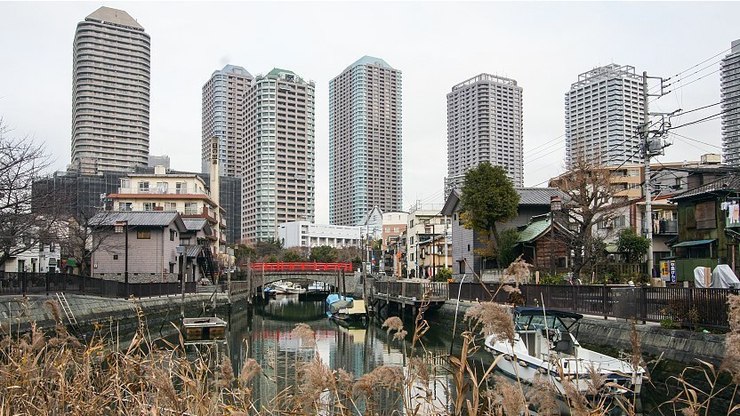
Removed from Unnamed collection
Tsukishima 
Tsukishima (月島, lit. moon island) is a man made island in Tokyo Bay, just across the channel from Tsukiji fish market. It was created over 100 years ago using earth that was dredged from the bay during the construction of a shipping channel.
In the last few decades, areas of the island were redeveloped into residential high-rise complexes; however, you can still find remnants of the atmosphere of old Tokyo if you poke around the back alleys and lanes, especially around Sumiyoshi Shrine. https://www.japan-guide.com/e/e3015.html
Map

Removed from Unnamed collection
Hama Rikyu 
Hama Rikyu (浜離宮, Hama Rikyū), is a large, attractive landscape garden in central Tokyo. Located alongside Tokyo Bay, Hama Rikyu features seawater ponds which change level with the tides, and a teahouse on an island where visitors can rest and enjoy the scenery. The traditionally styled garden stands in stark contrast to the skyscrapers of the adjacent Shiodome district.
The garden has served many purposes over the centuries. It was originally built as a feudal lord's Tokyo residence and duck hunting grounds during the Edo Period (1603-1867), but later served as a strolling garden and as an imperial detached palace before eventually being opened to the public in its current form. Vestiges of these old roles are still visible throughout the garden including several reconstructed duck hunting blinds, and the remains of an old moat and reconstructed rock wall.
Hama Rikyu is attractive in any season. Although not as famous for its fall foliage as some of the other gardens around Tokyo, it offers plenty of maple, ginkgo and other trees that show their beautiful autumn colors between late November and early December. https://www.japan-guide.com/e/e3025.html
Map
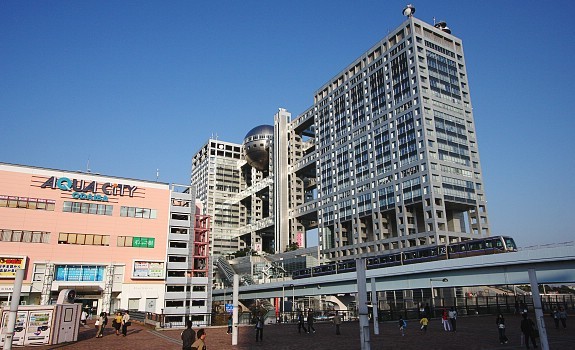
Removed from Unnamed collection
Odaiba 
Odaiba is a popular shopping and entertainment district on a man made island in Tokyo Bay. It originated as a set of small man made fort islands (daiba literally means "fort"), which were built towards the end of the Edo Period (1603-1868) to protect Tokyo against possible attacks from the sea and specifically in response to the gunboat diplomacy of Commodore Perry. More than a century later, the small islands were joined into larger islands by massive landfills, and Tokyo began a spectacular development project aimed to turn the islands into a futuristic residential and business district during the extravagant 1980s. But development was critically slowed after the burst of the "bubble economy" in the early 1990s, leaving Odaiba nearly vacant. It was not until the second half of the 1990s, when several hotels, shopping malls and the Yurikamome elevated train line were opened, that Odaiba developed into one of Tokyo's most popular tourist attractions and date spots with a wide selection of shopping, dining and leisure options.
Despite the initial setbacks, several lavish development projects did materialize, including some of Tokyo's boldest architectural creations, such as the Fuji TV Building, Telecom Center and Tokyo Big Sight. Modern city planning furthermore provides Odaiba with plenty of green space and a pleasant division of motorized and pedestrian traffic using elevated walkways and the like. https://www.japan-guide.com/e/e3008.html
Map

Removed from Unnamed collection
Korankei 
Korankei (香嵐渓, Kōrankei) is a valley near Nagoya reputed to be one of the best spots for autumn colours in the Chubu Region. Shaping the valley is the 254 meters tall Mount Iimori, on which Kojakuji Temple stands. In the 17th century, the head priest of Kojakuji planted some maple trees along with the temple approach, prompting many locals to do the same in the area. Today, visitors to Korankei can see the fruits of these past efforts, in the form of excellent autumn scenery that peaks around mid to late November each year.
The best colours tend to appear around the paths along Tomoe River at the western and southern sides of Mount Iimori. Visitors can enjoy lovely sights of maple tree tunnels and autumn colours in combination with views of the river and the few bridges across it. The vermillion Taigetsukyo Bridge is the symbol of Korankei and a great picture-taking spot. https://www.japan-guide.com/e/e3316.html
Map

Removed from Unnamed collection
Nagoya City Science Museum 
A new building housing "Brother Earth", a 35-meter-diameter dome planetarium, was opened in March 2011. The planetarium is the largest in the world. Also, be sure to check out our four large-scale exhibitions featuring an aurora film shown in a -30°C and a 9-meter tall manmade tornado! These attractions are highly entertaining and allow museum visitors to experience the power of nature. Additionally, the building itself acts as an exhibit through the use of solar power, green walls, visible earthquake-resistant structures and elevator mechanisms. http://www.nagoya-info.jp/en/see/facilities/nagoya_city_science_museum.html
Map
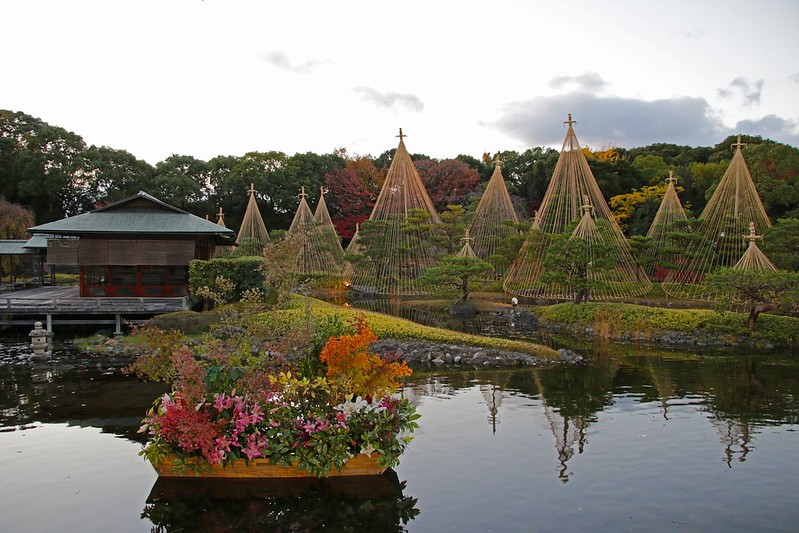
Removed from Unnamed collection
Shirotori Garden 
Enjoy a leisurely stroll in a traditional Japanese garden. In the centre of the garden is a pond that replicates the Kiso River, originating from the Kiso-Ontakesan flowing into the large sea of Ise Bay. A Japanese tea ceremony house Seiutei is available in the garden to try green tea with Japanese confectionery. http://www.nagoya-info.jp/en/see/facilities/shirotori_garden.html
Map
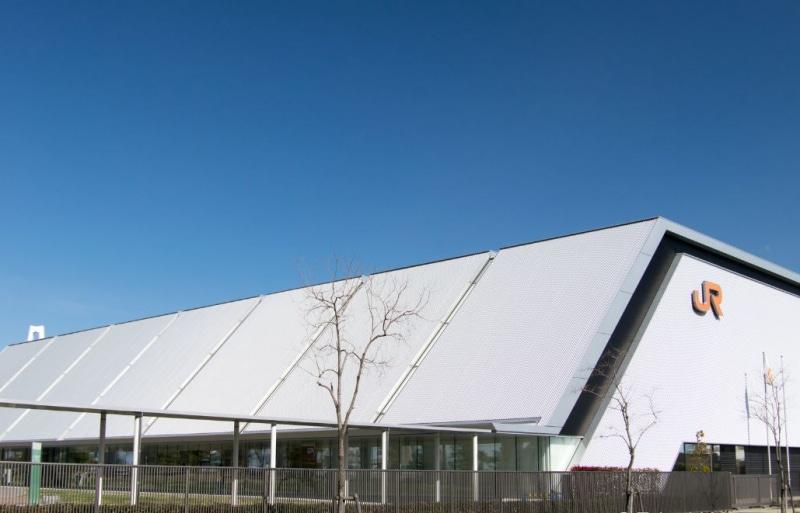
Removed from Unnamed collection
SCMAGLEV and Railway Park 
Opened in 2011, the SCMAGLEV and Railway Park is the railway museum of Central Japan Railways (JR Central). The museum seeks to educate visitors on the advances in high speed rail in Japan and displays a number of actual trains including historic steam locomotives, world record setting experimental shinkansen (bullet train) and the latest magnetic levitating trains (maglev).
A collection of 39 retired train cars are displayed in the museum. Many of these can be entered or viewed from underneath, and are accompanied by a host of exhibits explaining the different parts of the trains and all aspects of their operation and maintenance. Another section of the museum is dedicated to maglev trains and JR Central's plans to construct a maglev high speed link between Tokyo and Osaka. The second floor of the museum also has lots of learning experiences, which are specifically geared toward young children. https://www.japan-guide.com/e/e3314.html
Map

Removed from Unnamed collection
Legoland Japan 
Legoland Japan opened in April 2017 in Nagoya. The outdoor amusement park has many attractions aimed at young children and some attractions of interest to accompanying adults. Visitors can expect large Lego models, rides, building stations and dining areas.
The amusement park is separated into seven themed areas, matching the different universes in the Lego world. Right in the middle of the park is "Miniland Japan" which highlights the iconic attractions across the entire country and is constructed out of millions of Lego bricks. Here you can find Kyoto, Tokyo and Mount Fuji just a few steps away from one another. The rotating Observation Tower not far from Miniland offers a bird's eye view of the park and its surroundings. https://www.japan-guide.com/e/e3317.html
Map
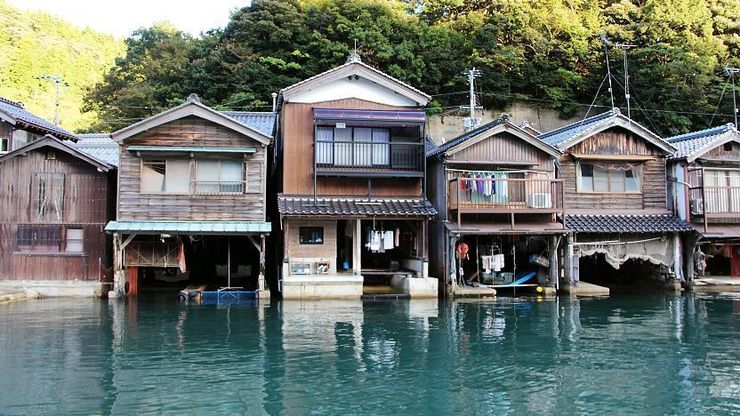
Removed from Unnamed collection
Ine Town 
Ine (伊根) is a town located around the Ine Bay in northern Kyoto Prefecture, about 15 kilometers north of Amanohashidate. This working town has a long and rich history as a fishing village and is regarded as one of the most beautiful villages in Japan.
The unique aspect of Ine are its funaya. Literally meaning "boat houses", these traditional waterfront buildings contain garages for boats on their first floors and residential space on the upper floors. Today there over 200 funaya remaining along the bay. Some of them now serve as guest houses where visitors can stay the night and experience the funaya first-hand.
The town itself is a normal town inhabited by working people, and most houses are personal residences. There are only a small number of shops and restaurants, meaning that there is not an incredible amount to do here. The largest concentration of amenities are found at Funaya no Sato Park, a roadside station on a hill above the town with large parking lots, a tourist information office, an observation deck, restaurants and shops. https://www.japan-guide.com/e/e3996.html
Map
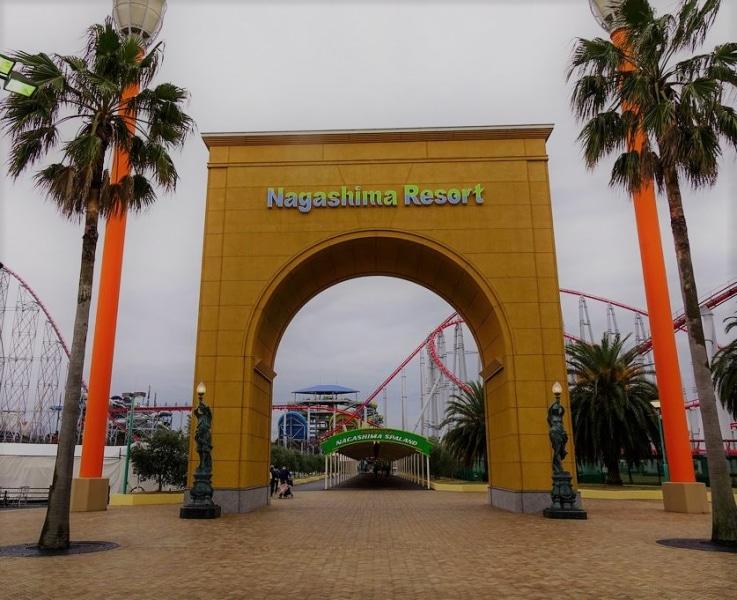
Removed from Unnamed collection
Nagashima Resort 
Nagashima Resort is a major vacation destination just outside Nagoya. It is comprised of five main leisure facilities: the Nagashima Spaland amusement park, a water park, a hot spring complex, an outlet shopping mall and a flower park named Nabana no Sato. The resort is located on a long piece of land that is surrounded by rivers and the sea; fittingly, it is called Nagashima or "long island".
Nagashima Spaland, reputed to be the best amusement park for roller coasters in western Japan, is the main attraction of the resort. The park is filled with over forty rides, ranging from gentle ones suitable for children to outrageous ones for those looking to spend some exhilarating moments. Immediately noticeable even before entering the main gate is the Steel Dragon 2000, a gigantic roller coaster ride which spans the entire length of the park. https://www.japan-guide.com/e/e3313.html
Map
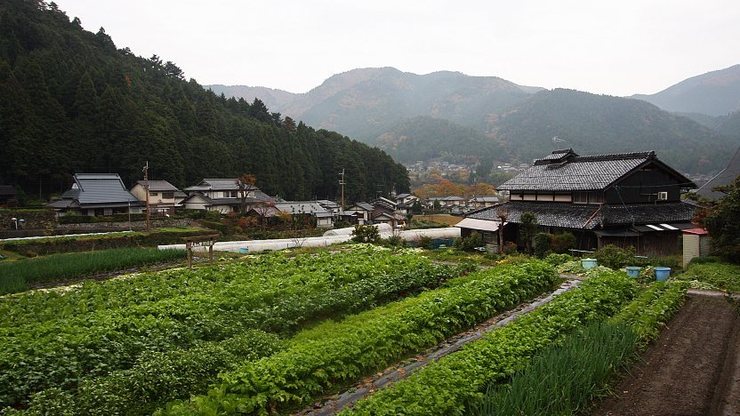
Removed from Unnamed collection
Ohara 
Ohara (大原, Ōhara) is a rural town nestled in the mountains of northern Kyoto, about one hour from Kyoto Station, but still technically located within Kyoto's city limits. Ohara is best known for Sanzenin Temple and particularly popular in mid November during the autumn leaf season, which typically occurs about one week earlier than in central Kyoto. https://www.japan-guide.com/e/e3932.html
Map
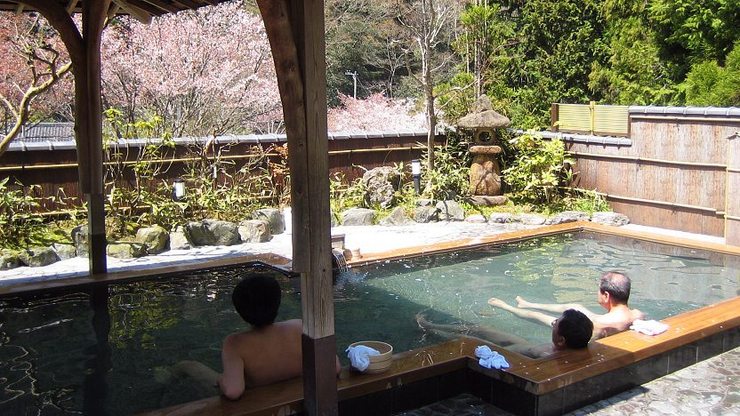
Removed from Unnamed collection
Kurama Hot Springs 
Kurama (鞍馬) is a rural town in the northern mountains of Kyoto City, less than one hour from the city center. Kurama is best known for its temple Kurama-dera and its hot spring, one of the most easily accessible hot springs from Kyoto.
Outdoor and indoor baths can be enjoyed at Kurama Onsen, a ryokan located at the upper end of the town of Kurama. It can be reached in a 10 minute walk from the train station along the town's only road or along a nature trail following the river. Staying guests can use the baths for free, while daytrippers pay 2500 yen to use all of the baths or 1000 yen for just the outdoor bath (rotemburo). https://www.japan-guide.com/e/e3933.html
Map
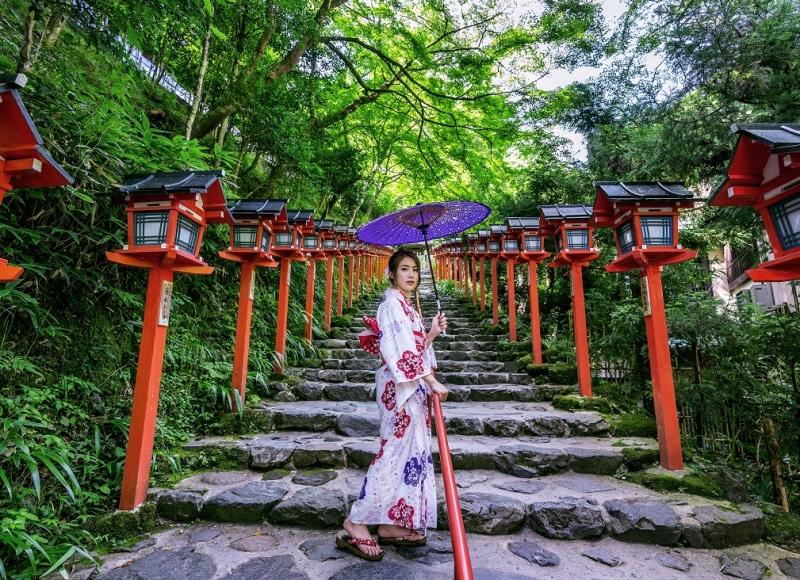
Removed from Unnamed collection
Kibune Town 
Kibune (貴船) is a small town in a forested valley in the northern mountains of Kyoto City, which developed around Kifune Shrine. According to legend, a goddess traveled in a boat from Osaka all the way up the river into the mountains north of Kyoto, and Kifune Shrine was built at the site where her boat journey had come to an end.
Kifune Shrine is dedicated to the god of water and rain and believed to be the protector of those at sea. Here you can obtain a unique type of fortune written on paper slips (omikuji) that reveal their messages when dipped into water. Okunomiya, the inner sanctum and original site of Kifune Shrine, lies about one kilometer further up the valley. It has a large rock, known as the boat stone, which is said to be where the goddess' yellow boat is buried.
The rest of the town is made up by traditional styled ryokan and restaurants that line the narrow road for a few hundred meters parallel to Kibune River. It is a popular retreat from Kyoto's famed summer heat, but is also well visited in autumn when the leaves change. https://www.japan-guide.com/e/e3967.html
Map
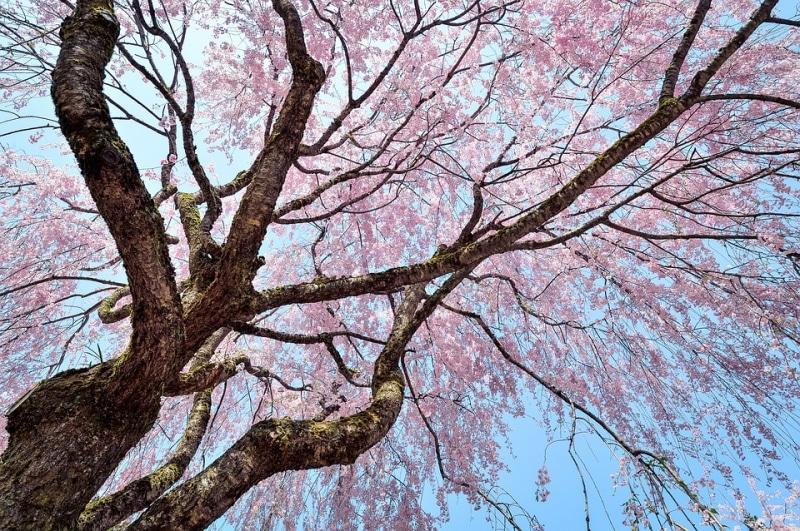
Removed from Unnamed collection
Maruyama Park 
Maruyama Park (円山公園, Maruyama Kōen) is a public park next to Yasaka Shrine in the Higashiyama District. In the first half of April, when the cherry trees are in full bloom, the park becomes Kyoto's most popular and most crowded spot for cherry blossom viewing parties (hanami). The centerpiece of the park is a tall shidarezakura (weeping cherry tree), which gets lit up in the night.
Maruyama Park can be reached by bus from Kyoto Station in about 20 minutes. Take number 100 or 206 and get off at Gion bus stop. The park is just behind Yasaka Shrine. Alternatively, the park can be reached in a 15+ minute walk from Kiyomizudera through the narrow lanes of the Higashiyama District. https://www.japan-guide.com/e/e3925.html
Map
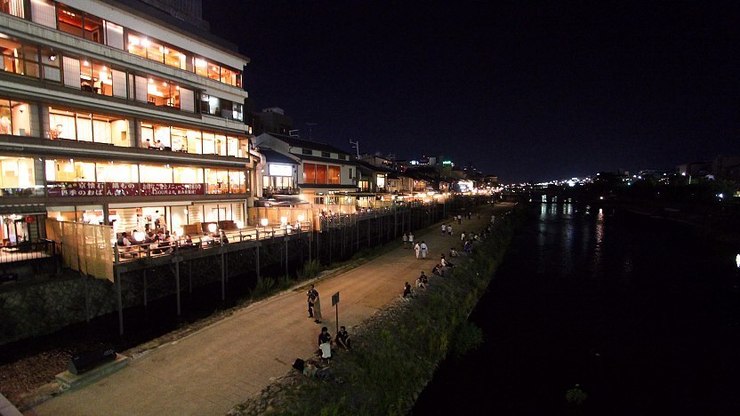
Removed from Unnamed collection
Pontocho 
Pontocho (先斗町, Pontochō) is one of Kyoto's most atmospheric dining areas. It is a narrow alley running from Shijo-dori to Sanjo-dori, one block west of Kamogawa River. The alley is packed with restaurants on both sides offering a wide range of dining options from inexpensive yakitori to traditional and modern Kyoto cuisine, foreign cuisine and highly exclusive establishments that require the right connections and a fat wallet.
Most of the restaurants along the eastern side of the alley overlook Kamogawa River. From May to September, many of them build temporary platforms over the flowing water where patrons can dine out in the open air. Known as kawayuka, this type of dining was developed as a way to beat the summer heat and is a great way to try some traditional Kyoto cuisine while taking in the cooling effects of the flowing water and the lively summer atmosphere. https://www.japan-guide.com/e/e3921.html
Map

Removed from Unnamed collection
Higashiyama District 
The Higashiyama District (東山) along the lower slopes of Kyoto's eastern mountains is one of the city's best preserved historic districts. It is a great place to experience traditional old Kyoto, especially between Kiyomizudera and Yasaka Shrine, where the narrow lanes, wooden buildings and traditional merchant shops invoke a feeling of the old capital city. Recent renovations to remove telephone poles and repave the streets have further improved the traditional feel of the district.
The streets in Higashiyama are lined by small shops, cafes and restaurants which have been catering to tourists and pilgrims for centuries. These businesses retain their traditional design, although many have been renovated through the years, and they continue to serve customers today, selling local specialties such as Kiyomizu-yaki pottery, sweets, pickles, crafts and other souvenirs.
The shops and restaurants in the area typically open around nine or ten in the morning and close relatively early around five or six in the evening, except during the ten day long Hanatoro in March when the streets of Higashiyama are lined by thousands of lanterns and many of the area's temples, shrines and businesses have extended hours and special illuminations. https://www.japan-guide.com/e/e3959.html
Map
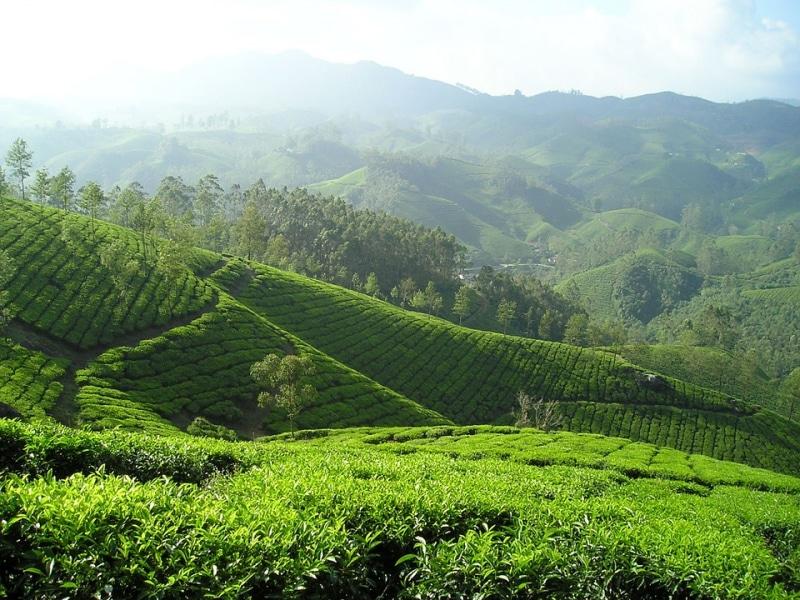
Removed from Unnamed collection
Ishitera Tea Fields 
The most famous tea plantations in Wazuka are in Ishitera. It was designated and registered as the first of the Scenic Property of Kyoto Prefecture. This tea field photo is used in many different tea places as a promotion in Kyoto. It takes about 10~15 minutes to walk there from the nearest bus stop ‘Wazuka Takahashi’. Among the tea fields there are new houses and old houses where people. There are spots for cherry blossoms and tea fields which go through winter in spring. http://visitwazuka.com/ishitera-tea-fields/
Map
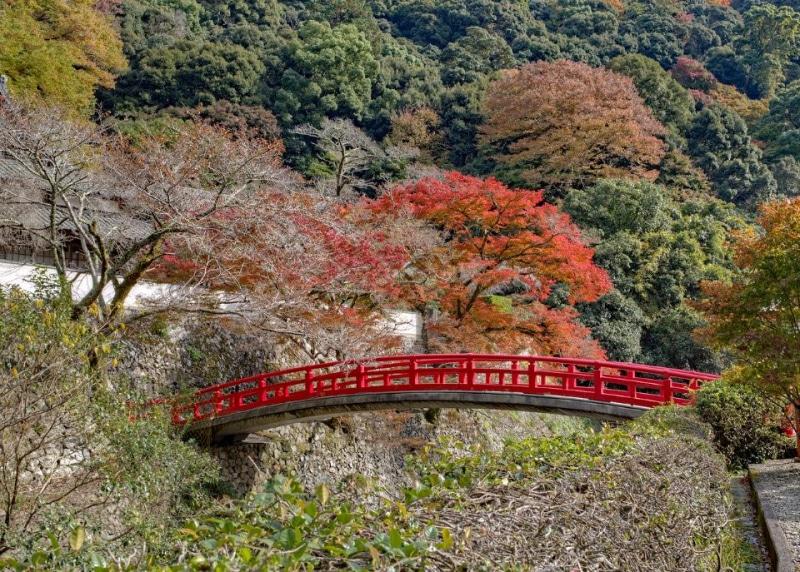
Removed from Unnamed collection
Mino Park 
Minoo Park (箕面公園, Minō Kōen, also spelt Mino or Minoh) is a forested valley on the outskirts of Osaka, just north of the urban sprawl. During the fall, it is one of the best places in the Kansai Region to see the autumn colours in a natural setting, as opposed to the attractive fall foliage found at temples and gardens. The colours are usually best in the second half of November.
Similar to Tokyo's Mount Takao, Minoo Park is the closest spot to the busy metropolis of Osaka to find a spacious natural recreation area. The park can be reached in less than 30 minutes from the downtown Umeda area. Another similarity, Takao and Minoo were both given quasi-national park status in 1967 to commemorate the hundredth anniversary of the Meiji Period (1867-1912). https://www.japan-guide.com/e/e4019.html
Map
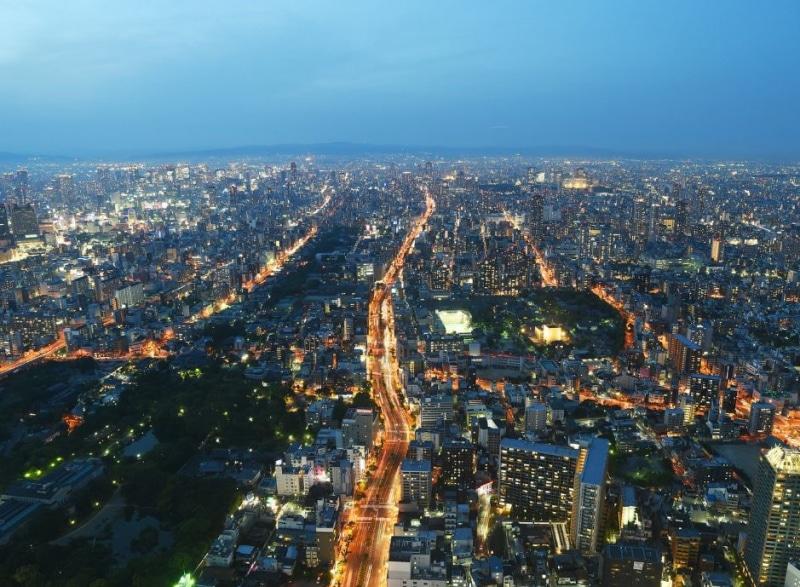
Removed from Unnamed collection
Abeno Harukas 
Standing 300 meters tall, Abeno Harukas (あべのハルカス) in Osaka is the tallest skyscraper in Japan. The building stands on top of the Kintetsu Osaka Abenobashi Station and is conveniently located across from JR Tennoji Station. It houses a department store, an art museum, a hotel and an observation deck.
The observation deck is called "Harukas 300" and occupies the building's top three floors (floors 58 to 60). The observation deck is accessed by elevators from the 16th floor. With large floor-to-ceiling glass panels all around, the 60th floor offers 360-degree views of Osaka, while the 58th floor features an attractively designed inner court with a wooden deck and cafe. A souvenir shop and restrooms with views are also available. https://www.japan-guide.com/e/e4026.html
Map
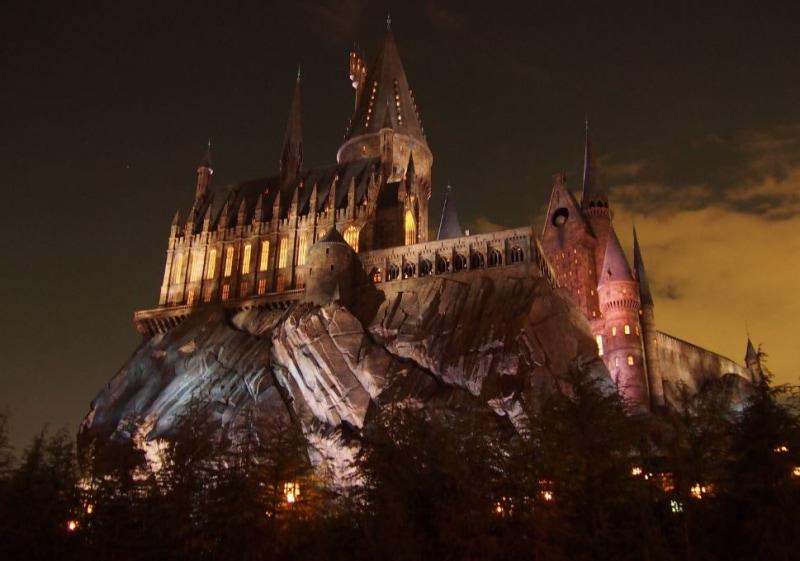
Removed from Unnamed collection
Universal Studios Japan 
Universal Studios Japan (USJ) was the first theme park under the Universal Studios brand to be built in Asia. Opened in March 2001 in the Osaka Bay Area, the theme park occupies an area of 39 hectares and is the most visited amusement park in Japan after Tokyo Disney Resort.
Universal Studios Japan currently has eight sections: Hollywood, New York, San Francisco, Jurassic Park, Waterworld, Amity Village, Universal Wonderland and The Wizarding World of Harry Potter. Visitors are able to enjoy many amusement rides, ranging from child-friendly carousels to thrilling roller coasters and simulators based on popular movies such as Spiderman, Back to the Future, Terminator 2 and Jurassic Park. https://www.japan-guide.com/e/e4021.html
Map

